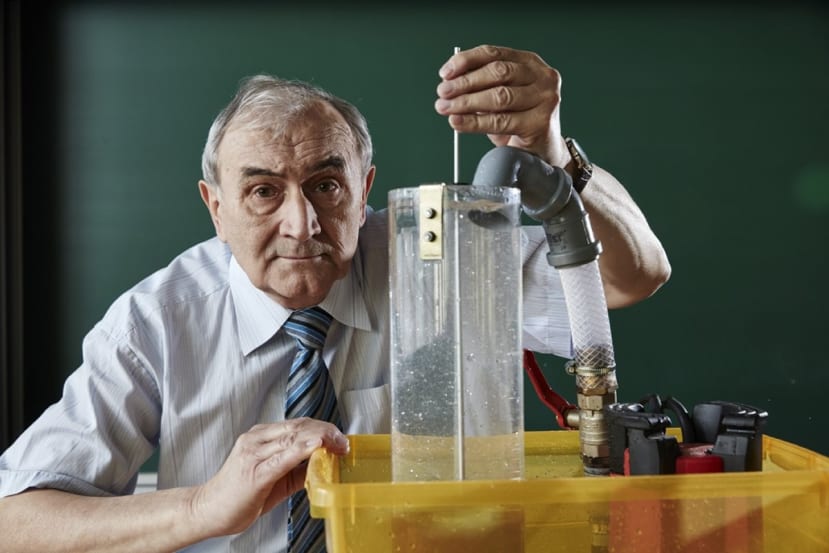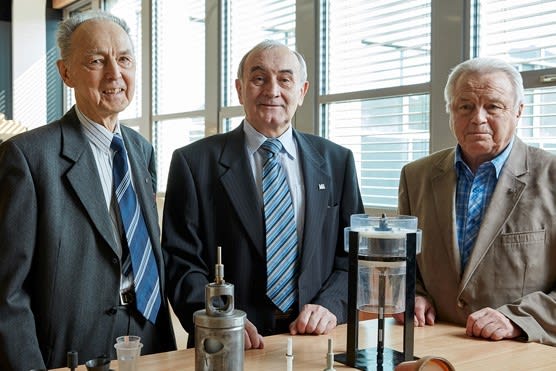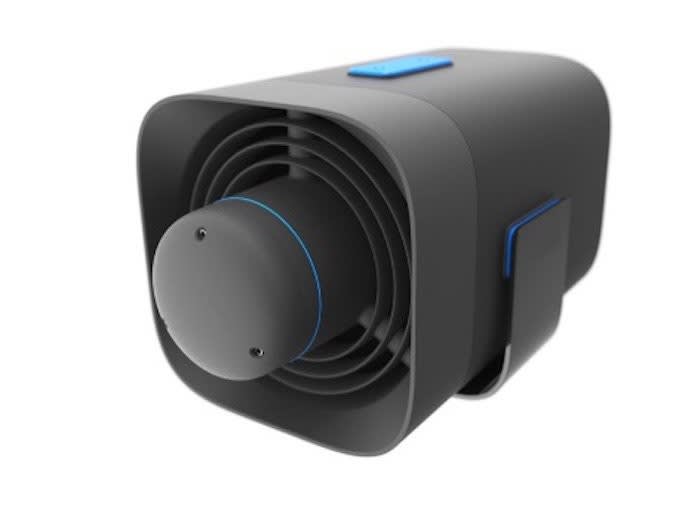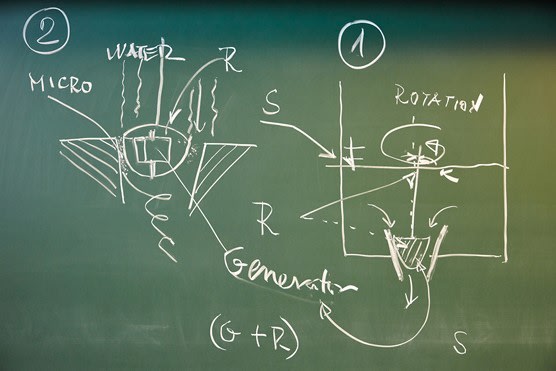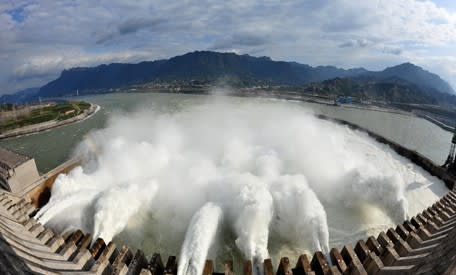Inventors and the invention: The Rolling Fluid Turbine
Follow articleHow do you feel about this article? Help us to provide better content for you.
Thank you! Your feedback has been received.
There was a problem submitting your feedback, please try again later.
What do you think of this article?
Miroslav the inventor
The Rolling Fluid Turbine was invented by the Czech civil engineer Miroslav Sedlacek, an associate professor at the Department of Economics and Management in Civil Engineering of the Czech Technical University in Prague.
A child of the 1950’s Miroslav obtained his engineering degree at the University of Economics in Prague in 1976. With a keen interest in natural sciences and history from a very young age, he always strived to make his passions more popular, so teaching was a natural path for him to take. Miroslav worked in radio for 30 years, and television as an editor, as well as being a screenwriter and director for documentaries and educational programs. And if all of that wasn’t enough, Miroslav is also a prolific author and has many science-based educational books to add to his name.
Inspiration
The Vltava River in Prague is where Miroslav first found his inspiration, he had often seen small whirlpools in the water but never really considered the physics involved. He noticed that small objects such as a leaf caught in the edges of these vortexes rotated counter to the direction of the whirlpool and rotated around their own axis. Miroslav found this fascinating and wondering if some method of power generation could be created from studying this occurrence.
Miroslav Sedlacek (centre), with Vladimir Novak( right) and Vaclav Beran
Miroslav sought support to study the phenomena from his university, which was granted, and he set to work investigating vortex theory with the help of two fellow engineers, Vladimir Novak and Vaclav Beran. Sedlacek and his team, at the Czech Technical University, spent a number of years investigating and developing a viable vortex principle technology.
Design
This unique concept unlocks the potential for electricity generation in low volume waterways such as a stream or a brook. Opening up a whole range of unexplored sources of sustainable energy in many areas of the world. The rolling fluid turbine is a viable alternative to conventional hydroelectric generators, which have been providing power from water since they were developed in the 1880s. Typically hydroelectric power requires a huge head of water to function, relying on blades submerged in high-velocity water streams. The rolling fluid turbine relies on physics to convert water's natural flow into upward pressure to generate electricity, this promises to change how water current is transformed into electrical power.
This is achieved by exploiting a unique hydrodynamic principle, the rolling fluid principle, a vortex dynamic, which can create a large amount of energy. This is achieved by using the naturally occurring suction of water by driving it through a specially shaped turbine casing, Sedlacek and his team have managed to generate power with an output of up to 10 kWh per day at 60% efficiency from a small turbine. This is enough power to meet the average daily requirements of a European family or an entire African village.
How it works
The invention is a tubular canister that floats like a buoy on the surface of a small body of water. Beneath the surface, the natural flow of water is directed through a tube driving the water pressure upwards with increased suction as a result of the vortex principle. Inside the turbine shaft, the vortex energy rotates a cup mounted on a generator shaft that converts the rotation into electrical energy.
When installed in a slow moving stream, the turbine can generate energy for a small house at levels of up to 400 watts. Ideally, the bladeless turbine operates more effectively at flow levels of 22 to 250 litres per second, but it can produce results in flow rates as low as 2 L/sec.
This unique turbine design has won several international awards, including the E.ON Energy Globe Award, Czech Republic, in the Idea category, the WIPO Inventor Award and the Copper Award at the 6th International Exhibition of Inventions in Suzhou, China.
Benefits
Energy generation from fossil fuels is a growing environmental concern, accounting for an estimated 10 billion tonnes of CO2 emissions per year. Although the EU aims to cover 20% of its energy demand from sustainable resources by 2020, about 25% of its energy needs are met by coal-fired power stations. In Germany, the share of coal used in energy production is as high as 45%
Hydropower generation could become more relevant for the energy mix now that Sedlacek's invention makes it possible to tap a significantly wider range of water resources. According to the European Ocean Energy Association, wave and tidal energy generation in Europe will reach 188 gigawatts by 2050, enough to meet 15% of Europe's electricity demand and up to 20% of the national demand in some countries. Where will this design fit in? Time will tell as its awareness and popularity grows.
Economy
In the EU, over one million people are employed in the renewable energy market, a market worth over 130 billion euros a year with annual exports of around 35 billion euros. In North America, revenue from hydroelectric power generation is expected to reach 163 million dollars in 2017. This is only set to increase as the future unfolds and the world turns to a more environmentally friendly means of energy creation.
A range of fully functional units is available from Vortex Hydrokinetics LLC under the brand name SETUR Bladeless Turbine in 16 countries since June 2015.
Whatever the future holds, this unique and practical design offers increasing options for less resource demanding power generation from a wide selection of sources previously overlooked. With the drive for cleaner and more efficient energy at the forefront of future power generation methods, this concept is certain to be there with its sheer diversity of applications.
For More information please visit https://vortexhydro.com/
To order Click Here


